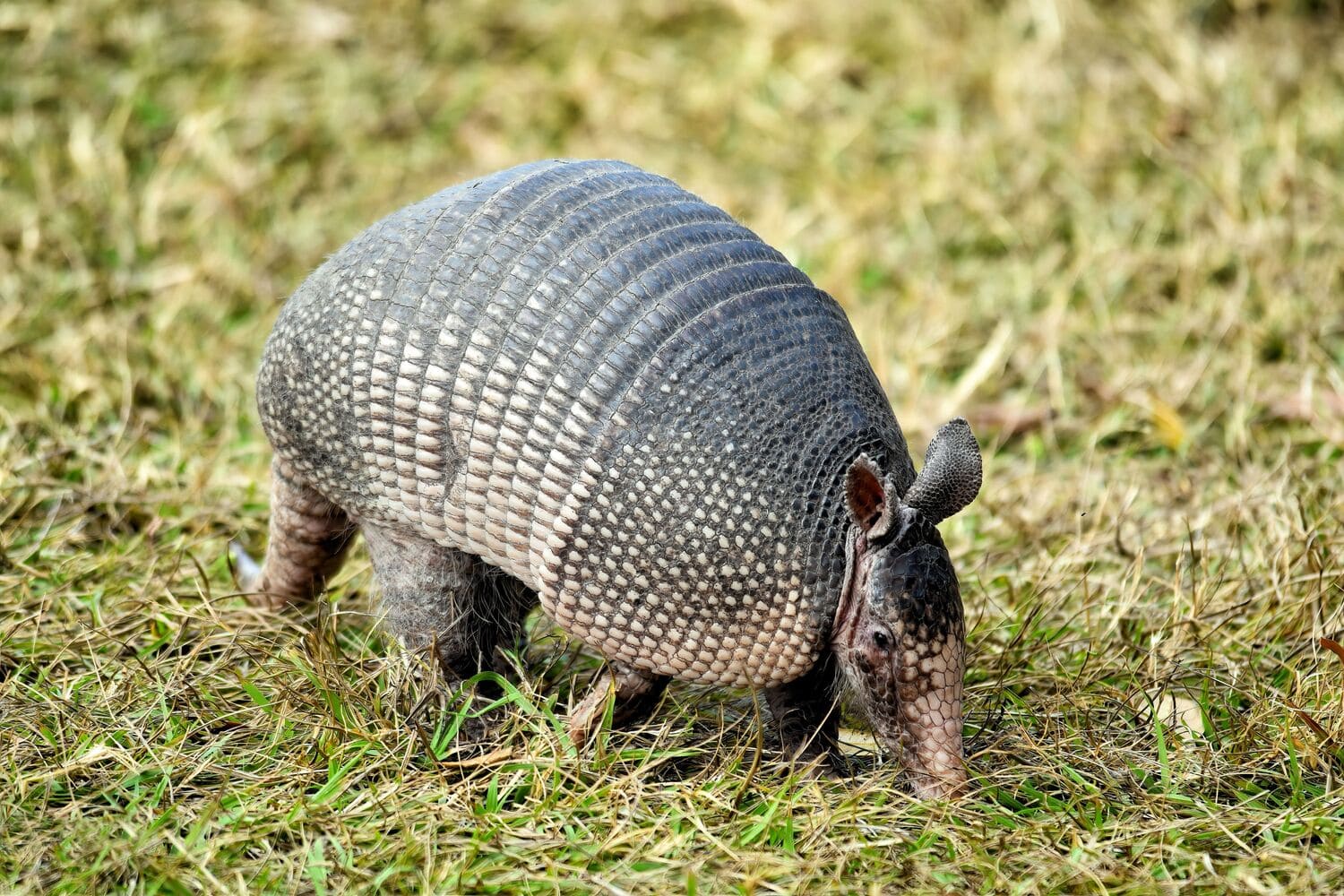Armadillos are extraordinary creatures that impress not only with their appearance but also with their way of life. They have an armor that protects them from predators and live in South and Central America. These mammals can dig, swim, sleep up to 18 hours a day, and adapt to different environments. Their behavior, physiology, and even reproductive traits attract the attention of scientists and wildlife enthusiasts. Here are some fascinating and interesting facts about armadillos you may not have known.
- Armadillos are the only mammals with a bony armor. It is made up of plates covered with a keratin layer and covers not only the back, but also the head, tail, and even legs. This armor protects them from predators. It is flexible, allowing the animal to move freely.
- There are 21 known species of armadillos, each with its own characteristics. Some species have armor with three movable segments, while others have up to nine. The smallest armadillo, the pink fairy armadillo, measures only about 15 cm in length. The largest species, the giant armadillo, can weigh up to 60 kg.
- Only one species of armadillo can roll into a ball. This is the three-banded armadillo, which can completely enclose its body with its armor. Other species, instead of rolling, either run away or dig into the ground. This ability makes it unique among its relatives.
- Armadillos have very poor eyesight. They rely mainly on their sense of smell and hearing to find food or detect danger. Their sense of smell is so well developed that they can detect insects underground. Their small eyes are of little use for orientation.
- Armadillos feed mainly on ants, termites, and other small invertebrates. Their long, sticky tongue allows them to reach insects in narrow cracks and tunnels. Some species can consume up to 40,000 insects a day. Their stomach has strong muscles that help grind and digest hard food.
- Armadillos can hold their breath for up to 6 minutes. This allows them to swim underwater or cross streams and ditches. They can calmly walk along the bottom of water bodies, pushing themselves with their legs. They can also take in air into their intestines, which increases buoyancy.
- Armadillos are skilled diggers. Their large-clawed legs are adapted for digging in search of food or for creating burrows. Their tunnels can be several meters long. Often, they construct multiple shelters and rotate between them.
- Female nine-banded armadillos always give birth to four identical offspring. This is the only mammal with such a trait: all four young are genetically identical. Scientists study this phenomenon to better understand twinning in humans. Other species of armadillo may produce varying numbers of offspring.
- Armadillos can carry the bacterium that causes Hansen’s disease, also known as leprosy. In some parts of the United States, this has raised concern among the public. Although the risk of infection is minimal, scientists have traced links between contact with these animals and human cases of the disease. This is a rare example of disease transmission from a wild animal to humans.
- These animals are very sensitive to cold. They prefer warm and humid climates. During cold spells, armadillos enter a state similar to torpor to conserve energy. This limits their distribution in northern regions.
- In many South American cultures, armadillos are seen as symbols of caution and resilience. Their images can be found in folk art, music, and legends. In some regions, they were even part of spiritual rituals. This shows the close connection between humans and wildlife.
- In the wild, armadillos usually live 7 to 10 years. In captivity, they can live longer with proper care. However, they require specific conditions and plenty of space for digging. This makes them challenging to keep as domestic animals.
- Some armadillo species are nocturnal. They hide in their burrows during the day and come out at night to forage. They navigate the dark using their keen sense of smell and touch. This behavior helps them avoid daytime predators.
- Armadillos are capable of traveling long distances in search of food or shelter. Despite being slow, they are very enduring. They can cover several kilometers in a single night. This enables them to survive even in harsh environments.
The fascinating world of armadillos captivates with its strangeness, diversity, and adaptability to life in the wild. These amazing facts reveal new aspects of animals we often overlook. Their lifestyle, defensive strategies, and ecological role are truly impressive. Armadillos remind us of how rich and astonishing the natural world of our planet truly is.





